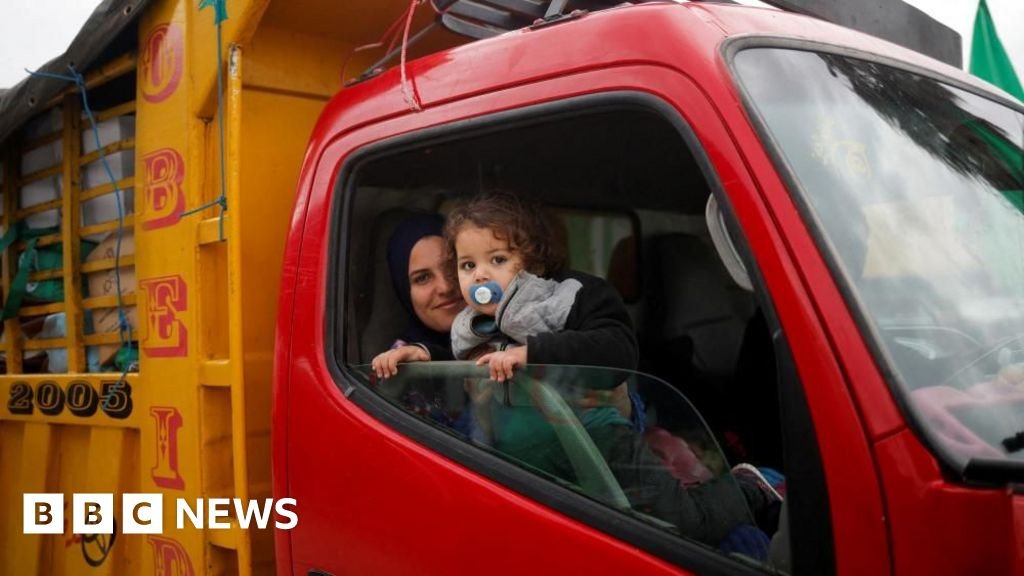The Israeli military has warned Lebanese citizens not to return to 60 villages in the south of the country, three days into a ceasefire after more than a year of fighting with the Shia armed group Hezbollah.
The Israel Defense Forces (IDF) published a map showing a swathe of territory several miles deep, which it said residents must not return to. Anyone who did, it said, would be putting themselves in danger.
More than a million Lebanese have been displaced by the fighting, mostly from the south. Tens of thousands of Israelis have also been displaced.
The truce came into effect on Wednesday morning, though officials in Israel and Lebanon have accused each other of already breaching it.
On Thursday, the IDF said its forces fired artillery and carried out air strikes against targets in southern Lebanon. It added that it had fired at suspects after spotting activity at a Hezbollah weapons facility, and vehicles arriving in several areas, which it said breached the ceasefire.
Lebanon accused Israel of violating the agreement “multiple times” and said it was monitoring the situation.
A multinational monitoring group which includes representatives from the US, France, and the United Nations Interim Force in Lebanon (Unifil) was set up as part of the ceasefire to oversee compliance with its terms.
In his first interview since the ceasefire was declared, Israeli Prime Minister Benjamin Netanyahu said he had instructed the IDF to wage “an intensive war” should Hezbollah commit a “massive violation” of the ceasefire.
The ceasefire “can be short”, he said in the interview with Israel’s Channel 14.
Under the terms of the agreement, which was brokered by the US and France, Israeli forces will withdraw from south Lebanon as the Lebanese army deploys there simultaneously with no other armed groups allowed to operate in the area. This is meant to happen within 60 days from the start of the ceasefire.
The zone which the IDF said residents should not yet return to stretches from Mansouri on the coast to Shebaa in the east.
On Wednesday, the Lebanese army warned residents not to return to areas where Israeli forces were before they had withdrawn.
Israel invaded southern Lebanon at the start of last month after the IDF intensified military action against Hezbollah.
Hezbollah began the current conflict with Israel by firing rockets in and around northern Israel on 8 October 2023, a day after Hamas’ unprecedented attack on Israel from Gaza which killed about 1,200 people.
Hezbollah said it was acting in solidarity with the Palestinians after Israel responded to the Hamas attack with a massive military campaign in Gaza. The Hamas-run health ministry says at least 44,330 Palestinians have been killed in the Israeli offensive.
Since 8 October, Israel and Hezbollah have exchanged fire with increasing intensity. The Lebanese health ministry said Israeli strikes had killed at least 3,961 people and injured 16,520 others in that period. The figures do not differentiate between civilians and combatants.
Hezbollah’s attacks have killed 31 soldiers and 45 civilians inside Israel, Israeli authorities say. Another 45 Israeli soldiers have been killed fighting in southern Lebanon.
In his first reaction since the agreement, Hezbollah chief Naim Qassem said the group would co-ordinate with the Lebanese army to implement the ceasefire.
Hezbollah, he said, had achieved a great victory – preventing Israel from destroying it. It is a narrative which may be embraced by its supporters, but not by others given the scale of loss of human life and the widespread destruction of land and property in Lebanon.


